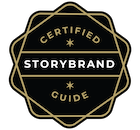Content marketing can be a labor-intensive process, but with some planning, you can jump ahead of your competition with this fantastic marketing tool. At its core, content marketing is creating and sharing free, interesting, valuable, and most importantly relevant content to customers and prospects. Your ultimate goal is to attract new customers and entice current customers to come back for more. Follow our step-by-step way to get started on content marketing for your startup business.
Step 1: Find Your Audience
As you begin, you should have an idea of who your audience is. Now you’ll need to figure out where they are so that you can deliver your content appropriately. Do they use Google, Forums, Facebook, Instagram, Snapchat, or a mixture of these channels? Would they rather receive content via social media or email? Engage in a blog post or a youtube video? Knowing the details of your target audience gives you an incredible advantage as well as the ability to properly execute your content strategy to achieve your goals.
First of all, what are the demographics of your audience? This includes a wide range of variables include age, gender, location, and more. Second, and most importantly for content marketing, what is the psychological profile of your audience? In other words, what are their likes and dislikes, problems that need solutions, or everyday struggles? Learning these key insights will create a specific direction for creating content as well as the most effective delivery of that content (blog, whitepaper, video, etc).
Social media particularly lends itself to specific groups of individuals. If you have a young demographic, you are more likely to find them on Facebook, Snapchat, or Instagram. Those targeting white-collar professionals would be better served heading to LinkedIn to distribute their content. And if you’re providing up-to-date news, Twitter would be the best channel. In other words, figure out where your demographic is and go there.
This concept extends beyond social media. You also want to use your audience demographics to determine the most appropriate form for your content to take. A younger audience is generally more interested in visual content whether images or videos. If you are targeting business professionals, richer content is more helpful and may take the form of blogs, webinars, slideshows, or whitepapers.
Step 2: Listen To Your Audience
Listening to your audience will lead you to the content that is most desired and therefore most successful for your goals. Taking a look at the specifics of your audience will help to break down what kind of content you should be creating for them.
As you are listening to your audience, try to understand their pain points. What information can you provide that could alleviate these pain points? Conduct extensive research on trade forums, social media, LinkedIn groups or simply ask your current customers what information would help them do their job better. You should picture yourself as the ultimate listener. This is valuable in developing content themes which we’ll discuss next.
Step 3: Develop Your Content Theme
The last thing you want to do is to create poor and irrelevant content. After all, what good is spending time on creating content if no one will engage with it? The goal of your content should be to provide valuable information for your audience that they can’t get anywhere else. In essence, you want to build a digital relationship with this prospect or customer so that they will continue to engage with you and come back for more. The other goal for your content marketing is to position yourself as a thought leader in your industry. This can lead to opportunities to partner with industry publications and generate more visibility for your business.
Using these two goals as well as the audience demographics you explored previously, create a set of guidelines for your content. However, be sure to avoid content that simply describes how to use your product. Your audience wants more engaging content and will be turned off by any attempt to simply sell to them.
It is important to bucket your content into different themes that each have their own goal and help your customers or prospects move down the purchasing funnel. Below are a few examples of content themes but we recommend tailoring the themes to your industry as well as adopting themes from outside of your industry.
Theme Examples:
- Problem-solving content
- New innovations
- Insider information
- Demystify the experience with your brand
- Create a desire to use your product
Step 4: Create Your Content Calendar
Now it’s time to pull all of your work and research together and into an actionable plan. A content calendar is the key to making sure that your content is released on schedule and on a regular basis. It keeps tabs on who is doing what and keeps things from falling through the cracks. Your content calendar also gives you a chance to regroup on a regular basis to make sure your content is still fitting into your big picture goals and allows you to evolve as the market evolves.
The details of a content calendar can be as simple as an Excel spreadsheet or as complex as any number of integrated tools that can be found online. Great Content Calendar tools include; MeetEdgar, Hootsuite, and Azendoo. The important details that are a must to include on your calendar are the dates on which you will release content, subject matter, who the author will be, and how the content will be disseminated to your audience.
Conclusion
Now that you have the beginning steps, you are ready to launch your content marketing campaign! But you’re not in this endeavor alone. If you need more help putting together your first content marketing campaign, please contact us today.



